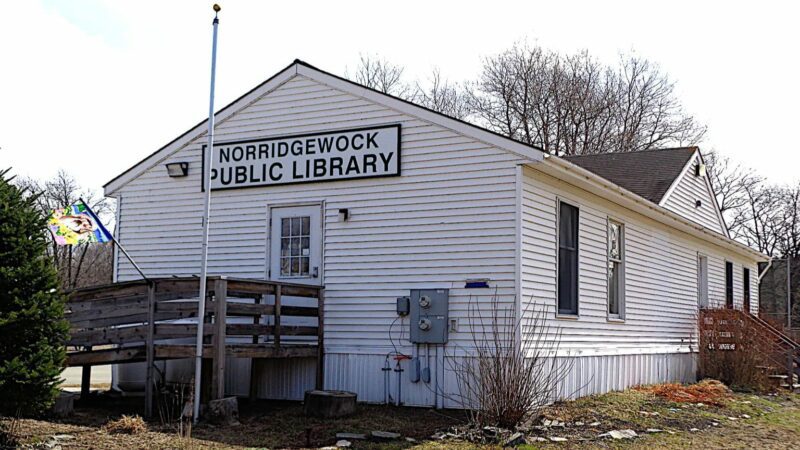A new grant program in Maine aims to help accelerate the transition to electric heat pumps in the state’s smallest towns.
In August, Efficiency Maine announced a $4 million program to help towns with fewer than 5,000 residents cut energy use in public buildings.
Though the plan is modest in size, organizers hope it will help accelerate the move from fossil fuels to electrified heat across the state.
“We just need to spur this market transformation,” said Michael Stoddard, executive director of Efficiency Maine. “These public dollars are incredibly helpful to get that going.”
The program, funded through the federal American Rescue Plan, is part of a recent focus by Efficiency Maine on helping underserved communities access the benefits of energy efficiency and clean energy technology. This summer, the agency announced an $8 million initiative to help pay for electric vehicle chargers in rural areas.
The latest program focuses on a particularly pressing issue for Maine: The need to transition to a cleaner heating fuel. The state experiences cold winters — temperatures routinely drop below zero — and some 60% of households in the state use heating oil to stay warm, the highest proportion of any state in the country. Heating oil is among the dirtiest heating fuels available and prices, which have long been volatile, have doubled in the past year.
Widespread adoption of electric heat pumps is a major part of the state’s environmental agenda. The only emissions associated with heat pumps are those produced by the electricity that powers them. And the cost of using heat pumps is typically well below that of using heating oil. In 2019, Maine set a goal of installing 100,000 heat pumps by 2025, a target it is well on the way to meeting.
As adoption continues to grow, Efficiency Maine wants to make sure that smaller towns and cities have a chance to get in on the financial and environmental benefits.
“Smaller towns face some barriers that are either different or a little bit more pronounced,” Stoddard said. “With this initiative we thought we would start by targeting some of the towns that by virtue of their size we believe have faced more of these barriers.”
Smaller towns, Stoddard said, may have a harder time getting contractors to bid on their projects. They may have fewer employees, making it difficult to put together paperwork or financing arrangements. And in small towns with lower average incomes, there may be resistance from residents who wonder why their tax dollars should pay for advantages they can’t afford for their own homes, said Richard LaBelle, town manager of Norridgewock, a central Maine community with a population of about 3,300.
These towns may also simply have too many competing demands for limited revenue, said Neal Goldberg, a legislative advocate with the Maine Municipal Association.
“They have other cost centers they need to be mindful of,” Goldberg said. “Is this the year to install a heat pump or is this year to buy enough salt to keep your roads safe?”
A simplified process
To help small towns overcome these obstacles, the new program offers significant financial incentives to help pay for projects that will cut municipal energy bills and carbon emissions. Efficiency Maine expects most participants will pursue heat pump retrofits, though LED lighting projects, refrigeration upgrades, and other heating and ventilation equipment also qualify for incentives.
Eligible buildings include town halls, community centers, public safety buildings, public works facilities, and libraries. Schools, outbuildings, and non-permanent structures are not eligible. The incentives vary with project type, but municipalities can receive as much as $2,800 for the installation of a new high-performance air-source heat pump in an existing building, capped at 90% of the total project cost.
Norridgewock has made use of previous Efficiency Maine incentives and expects to take advantage of this new offer as well, LaBelle said. Norridgewock is an inland town without much tourist traffic to help increase revenue, he said. The incentives, therefore, make it easier to make a case to residents that they will get their money’s worth from investments in energy-saving projects.
In recent years the town has upgraded most of the lighting in municipal buildings to LEDs and installed heat pumps in some facilities, including its library and fire station. LaBelle expects to use the new program to support deployment of heat pumps in even more buildings.
“We’re looking for efficiencies in any way we possibly can,” he said. “It has been a growing concern for us, naturally, as we see the national trends in fossil fuels and the costs of energy.”
Recognizing that small towns may not have enough employees to complete complex or competitive application processes, Efficiency Maine has made these grants noncompetitive and tried to streamline the paperwork as much as possible. And these efforts make a difference, LaBelle said.
“Often, municipal officials can be afraid of applying for grants because of administrative burdens,” LaBelle said. “They have really, really minimized that.”
To apply for these latest grants, a community need only choose the project type it is planning to pursue and complete a basic form that will allow Efficiency Maine to verify the eligibility. The agency also offers virtual consultations to towns that need assistance determining what projects might make sense for their facilities.
“When you have a finite budget, if you just make it first-come, first-serve, then the towns with deeper pockets will tend to consume most of the budget quicker,” Stoddard said. “There may not be much left by the time smaller towns are able to get their financing all in a row.”
This article originally appeared at the Energy News Network, and was republished with permission.




